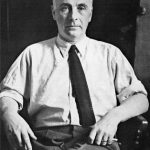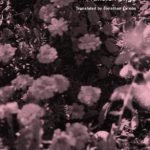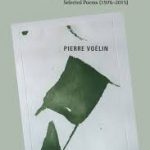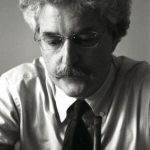The Book of the Dead by Muriel Rukeyser (West Virginia University Press)
Nioque of the Early-Spring by Francis Ponge, translated by Jonathan Larson (The Song Cave)
To Each Unfolding Leaf: Selected Poems, 1976-2015 by Pierre Voélin, translated by John Taylor (Bitter Oleander Press)
In 1943, the F.B.I. opened a file on the 30-year old poet Muriel Rukeyser. By then, J. Edgar Hoover knew that in 1933 she and others had driven from New York to Alabama to attend the Scottsboro Boys trial where, having been seen conversing with black reporters and handing out flyers, she had been arrested for “inciting the negroes to insurrections.” The F.B.I. was also aware that in 1936 Rukeyser traveled to Barcelona to report on the People’s OIympiad, an antifascist protest event which never took place due to the outbreak of the Spanish Civil War.
Of less interest to the government was Rukeyser’s trip in the spring of 1936 to the West Virginia town of Gauley Bridge, not long after she received the Yale Younger Poets Prize. Rukeyser traveled with her friend, the photographer Nancy Naumberg, to witness the site of what was then regarded by activists as the country’s most lethal industrial disaster. In 1930, some 3000 men working for Union Carbide began digging a three-mile tunnel through a sandstone mountain for a new electrometallurgical plant. By 1933, an estimated 764 men had died from silicosis, most of whom were black migrant workers. The site of catastrophe came to be known as “Hawk’s Nest.”

Rukeyser’s experiences in Gauley Bridge yielded The Book of the Dead, a twenty-part poem that is not only a singular masterpiece, but also established an innovative method for investigating events, exposing and critiquing national mythology, and responding to officialese through a morally incisive view of the actual. The work incorporates fragments of testimony from survivors and doctors, description of place, excerpts from regional history, Union Carbide stock ticker data, and a list of some of the dead and their places of burial.
But The Book of the Dead is also strikingly lyrical in parts – though she had no interest in projecting the ruminations of a self-crediting mourner-hero. Vision, not autobiographia, was her mode. She reconfigures the context of the industrial disaster so that it forms a part of a more ominous pattern that includes the country’s racial violence, Native American genocide, and war.
How significant is The Book of the Dead within the tradition of American poetry? In her essay on Rukeyser, Adrienne Rich quoted Louise Kertesz who said “no woman poet makes the successful fusion of personal and social themes in a modern prosody before Rukeyser.” But more, the poem-sequence also predates Paterson and The Maximus Poems, and anticipates techniques that are now familiar in politically charged poetry and cross-genre writing.
Now the photographer unpacks the camera and case,
surveying the deep country, follows discovery
viewing on groundglass an inverted image.
John Marshall named the rock (steep pines, a drop
he reckoned inn 1812, called) Marshall’s Pillar,
but later, Hawk’s Nest. Here is your road, tying
you to its meanings, gorge, boulder, precipice.
telescoped down, the hard and stone-green river
cutting fast and direct into the town.

Rukeyser and Naumberg had intended to publish the poems and photos side by side, and in 1937 they made plans to “show how the tunnel itself is a splendid thing to look at, but a terrible thing to contemplate” (from Naumberg’s letter of April 6). But their collaboration failed to launch, and Rukeyser published separately. “The Book of the Dead” formed part of her 1938 collection U.S. 1. The photographs were lost, though Catherine Venable Moore, who provides a fine introductory essay, notes that two of the images resurfaced at the Metropolitan Museum of Art – and are now included in this new edition.
Half-memories absorb us, and our ritual world
carries its history in familiar eyes,
planted in flesh it signifies its music
in minds which turn to sleep and memory,
in music knowing all the shimmering names,
the spear, the castle, and the rose.
But planted in our flesh these valleys stand,
everywhere we begin to know the illness,
are forced up, and our times confirm us all.
[Published February 1, 2018. 144 pages, $17.99 paperback. With an introduction by Catherine Venable Moore]
In Why Read the Classics?, Italo Calvino described the technique and intentions of Francis Ponge: “Taking the most humble object, the most everyday action, and trying to consider it afresh, abandoning every habit of perception, and describing it without any verbal mechanism that has been worn by use. And all this, not for some reason extraneous to the fact in itself (for, say, symbolism, ideology or aesthetics), but solely in order to reestablish a relationship with things as things.”
Ponge believed that an object revives – better, survives — in our sight through the exactitude of language. Sometimes he toyed with the “facts.” For instance, he claimed that birds care little for blackberries “since in the end so little is left once through from beak to anus.” This fanciful inaccuracy then sets up his true purpose, a connective comment on the poet’s role:
“But the poet during his professional stroll is left with something: ‘This,’ he says to himself, ‘is the way a fragile flower’s patient efforts succeed for the most part, very fragile though protected by a forbidding tangle of thorns. With few other qualities – blackberries, black as ink – just as this poem was made.”

Ponge’s Nioque of Early-Spring, as its translator Jonathan Larson notes in his introduction, was written as a series of notes in the early 1950’s, published in parts in Quel Tel and L’Éphémère in 1968, and issued as a slim chapbook in 1983. Preoccupied with rebirth and the cycle of seasons but also critical of the “grotesque and criminal pretension” of the Communist party, the poems must have resonated in a prescient way with those of Ponge’s readers who regarded the protests of 1968 with a discriminating eye.
Below, the opening lines of “Proem of the Same Day, Les Fleury, Sunday, April 2, 1950”:
“At every instant to have lost, having to find one’s vocabulary, having to start over from the most common vocabulary, crude, earth to earth, from the nearly total lack of peasants’ vocabulary, of workers, of their badges, dirty, earthlyclumsiness : look at what’s good! A chance.”
And then later:
“As there are piles of pebbles collected in places to regravel the roads, surely there are words. One must go and search for them. In the gullet, in the gullet of others, in books, in dictionaries. By the shovelful, in scraping the graveling.”

Ponge tells us that “NIOQUE is the phonetic writing (as one could write iniorant) of GNOQUE, the word I coined from the Greek root meaning knowledge, thus not so as to rework Satie’s GNOSSIENNE nor Claudel’s CONNAISANCE (of the East).” That may seem fussy, but Ponge believed that the root meanings of words contained or pointed to the physical uniqueness of the object. In this case, his title word allows him to treat his own knowledge as a named object, like a blackberry. In a 1941 piece, “Banks of the Loire,” he wrote, “Never sacrifice the object of my study in order to enhance some verbal turn” and “Never try to arrange things” since “the point is knowing whether you wish to make a poem or comprehend an object.” These are aspirational principles for the poet – who ends up “arranging things” anyway, but with the most respectful touch. For all the object-worship, the character of Ponge as poet frequently rises to the top as he chastises and demands more from himself, renewing his commitment “to earn, one day, to attain, one day, such a command, such an assurance, such a hand-turn tomorrow.”
Larson told the Poetry Society of America, “I decided to translate Nioque for Early-Spring, in part, for its bridge from the earlier Ponge of ThingsMaking of the Pr and The Table.” In this case, the middle of Ponge may be a fine starting point for new readers.
[Published May 1, 2018. $17.95, 80 pages]
In 1972 at the age of 24, the Swiss francophone poet Pierre Voélin read Andre du Bouchet’s translation of Osip Mandelstam’s Journey to Armenia. In 2009, he finally made his own journey to Armenia, “a country about which I intensely dreamt.” Voélin’s eight-part “The Poem From Armenia: Notes,” begins:
To get through the disgust – mine, yours, —
its expanse – your stones, Armenia,
may I count and recount them
until the end of time!
and this acidic green: young wheat
on the hills of Dilijan,
and this mauve and this yellow:
your alphabets of flowers,
on a mountain road
(but your roads are your wounds),
this smoke: the incense of little stoners,
this food:
seven branches of a candelabra of corn!
When the poem was published in L’Étrangère in 2016, Voélin added a note that read in part, “I must also excuse myself for the kind of fervor penetrating this poem, an almost shameful fervor since such feelings are so rarely expressed in contemporary poetry, but I think this fervor is mine as much as it was Mandelstam’s.” But clearly, Voélin is not apologizing for anything. The selected poems in To Each Unfolding Leaf, representing four decades of work, consistently assert where he prefers to position himself – in the long shadow of disquieted, contentious solitaries, Mandelstam and Celan and Char, those who praise and persist through the smoke.

Voélin inhaled what they exhaled. He wrote a poem as tribute to Anna Akhmatova, and paid homage to Dickinson and Hopkins. As a boy, he was taken to Dachau; as a poet, he returned to the topic of the annihilation of Jews during wartime, contemplated Stalin’s mass murders, and wrote prose about the Rwandan genocide. His 1994 piece “Screams and Silence” is addressed to the people of Sarajevo.
But his own experiences also found sonic analogs in the work of poets who were more lyrically inclined. He was taught by Yves Bonnefoy at the University of Geneva, absorbed the exacting aspirational work of Ponge, and responded to the shaky selfhood of Henri Michaux’s questing narrator, Plume. Whether addressing the death camps or his own erotic life, Voélin worked through fragmentation, the gathering of oblique comment into whole visions, pared down imagery, and his unabashed fervor.
Below, a section from “Only Snow Is Missing” (1997):
I sing with the thumbs of the cold
and the branches and the black of the bark
with the father’s handed-down voice
I sing and through my song invite
with flames at bay
to the table of snow
those alike unalike and the brother
the sister the husband and the wife
In the fields the crows are exulting
yanking at their fastened caws
scissors hovering high in the air
Memory – and this craving for whiteness
dazzled memory whenever the pine needles
rain down

[left: Voélin] An accomplished and tireless translator, John Taylor provides a useful introduction to the poet, and presents the French and English versions en face. After meeting in Paris in 2016, Taylor and Voélin corresponded through email, allowing the translator to compile several pages of insightful notes to the poems and the moments of their composition. Taylor wisely refrains from making a too forceful case for Voélin as an innovator, but he concurs with the Swiss critic and novelist David Collins who said, “[Voélin] is one of the most important French-language poets of his generation. His oeuvre is at once exacting and humble, musical and grave, joyous and highly crafted. His poetry is like a response or a prelude to encounter, gesture, and listening. It questions the weight of words, the stakes of poetic language, the memory of twentieth-century persecutions, shame, and survival.”
[Published April 21, 2017. 328 pages, $25.00 paperback]